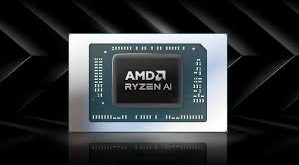AMD today updated its A-Series line-up of desktop and notebook Accelerated Processing Units (APUs), further improving its top-performing family of dual- and quad-core APUs. Along with speed and performance improvements, AMD Steady Video update make this unique feature more compelling than ever. For desktop users, AMD extends its overclocking pedigree to the APU; for the first time users can tune both x86 and graphics settings in a single processor for boosted performance.
The updated AMD A-Series APUs combine up to four x86 CPU cores with up to 400 Radeon cores, delivering powerful DirectX 11-capable, discrete-level graphics and dedicated HD video processing on a single chip. These new APUs increase performance and deliver a richer feature set than existing AMD A-series APUs. Plus, only AMD APUs offer AMD Dual Graphics for an up to 144 percent visual performance boost when a select APU is paired with a select AMD Radeon™ HD 6500 Series graphics card.
The AMD A-Series family of APUs also features AMD Steady Video, designed to stabilize videos during playback – making unsteady, jumpy content look steady and smooth as you watch. On select systems using AMD A-Series APUs, Internet Explorer 9 will include an AMD Steady Video plugin, unlocking one-click control to simplify access to the premium AMD Steady Video feature for video stabilization.
All AMD A-Series processors are powered by AMD VISION Engine Software, a suite of software that provides end-users with regular updates designed to improve system performance and stability, and can add new software enhancements.
- AMD A-Series Desktop APUs
- A8-3870K: Four CPU cores, 3.0 GHz CPU base (unlocked), 100W TDP, 400 Radeon cores, 600 MHz GPU base (unlocked), 4 MB L2 cache
- A8-3820: Four CPU cores, 2.5 GHz CPU base (2.8 GHz Turbo Core), 65W TDP, 400 Radeon cores, 4 MB L2 cache
- A6-3670K: Four CPU cores, 2.7 GHz CPU base (unlocked), 100W TDP, 320 Radeon cores, 600 MHz GPU base (unlocked), 4 MB L2 cache
- A6-3620: Four CPU cores, 2.2 GHz CPU base (2.5 GHz Turbo Core), 65W TDP, 320 Radeon cores, 4 MB L2 cache
- A4-3420: Two CPU cores, 2.8 GHz CPU base, 65W TDP, 160 Radeon cores, 1 MB L2 cache
- AMD A-Series Notebook APUs
- A8-3550MX: Four CPU cores, 2.0 GHz CPU base (2.7 GHz Turbo Core), 45W TDP, 400 Radeon Cores, 4 MB L2 cache
- A8-3520M: Four CPU cores, 1.6 GHz CPU base (2.5 GHz Turbo Core), 35W TDP, 400 Radeon Cores, 4 MB L2 cache
- A6-3430MX: Four CPU cores, 1.7 GHz CPU base (2.4 GHz Turbo Core), 45W TDP, 320 Radeon Cores, 4 MB L2 cache
- A6-3420M: Four CPU cores, 1.5 GHz CPU base (2.4 GHz Turbo Core), 35W TDP, 320 Radeon Cores, 4 MB L2 cache
- A4-3330MX: Two CPU cores, 2.2 GHz CPU base (2.6 GHz Turbo Core), 45W TDP, 240 Radeon Cores, 2 MB L2 cache
- A4-3320M:Two CPU cores, 2.0 GHz CPU base (2.6 GHz Turbo Core), 35W TDP, 240 Radeon Cores, 2 MB L2 cache
- A4-3305M:Two CPU cores, 1.9 GHz CPU base (2.5 GHz Turbo Core), 35W TDP, 160 Radeon Cores, 1 MB L2 cache
- E2–3000M: Two CPU cores, 1.8 GHz CPU base (2.4 GHz Turbo Core), 35W TDP, 160 Radeon Cores, 1 MB L2 Cache
Why: The new AMD A-Series family of APUs improves the first generation of highly successful and revolutionary desktop and notebook processors, providing an outstanding experience for consumers seeking more responsive multitasking, long battery-life, vivid graphics, lifelike games, lag-free videos and the ultimate multimedia performance.
When: Desktop APUs in the component channel as well as systems based on the new AMD A-Series APUs will hit the retail market over the next several weeks.
Who: The new AMD A-Series family of APUs is for mainstream users and performance enthusiasts seeking an outstanding experience on their desktop or notebook PC.
Source: Press Release
 KitGuru KitGuru.net – Tech News | Hardware News | Hardware Reviews | IOS | Mobile | Gaming | Graphics Cards
KitGuru KitGuru.net – Tech News | Hardware News | Hardware Reviews | IOS | Mobile | Gaming | Graphics Cards



